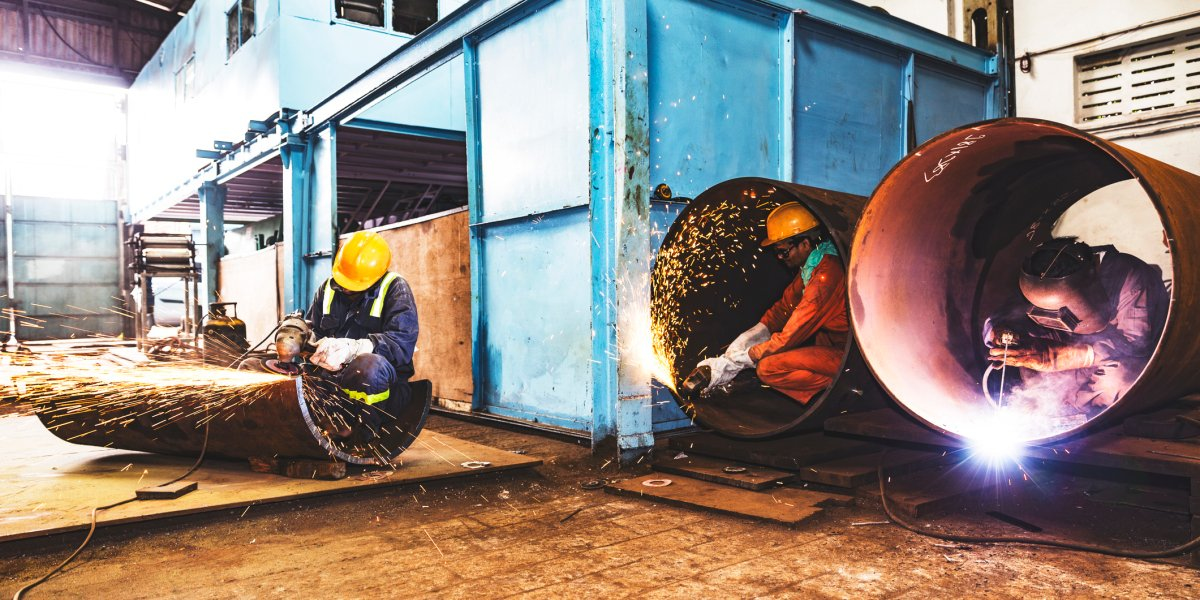Photo: GCShutter
Climate and trade – EU’s carbon border tax faces criticism
Unilateral trade measures – such as the EU’s carbon border adjustment mechanism (CBAM) –is one of the controversial topics on the agenda at COP30 in Belém. What is it about? And how is CBAM viewed both from the EU and from India, one of CBAM’s strongest opponents.
Climate and trade, or the intersection between them, is increasingly seen together, creating discussions and reactions. Examples of measures in the intersection between trade and climate policy include the EU’s carbon adjustment mechanism (CBAM) and the EU’s deforestation regulation (EUDR). Developing countries have long demanded that such trade or response measures should be part of the negotiations at COP as they fear the measures may reduce their ability for both development and decarbonization and that it could increase trade competitiveness. The EU rejects a standing agenda item on such response measures, claiming it could interfere with policies forming the basis of the parties' NDCs. The Brazilian COP presidency succeeded in moving response measures to informal consultations, not part of the official negotiations.
”There has been a collective push from the developing countries since COP28 in Dubai to include unilateral trade measures on the COP agenda. Poor and rich countries meet at COP with different objectives. The global south wants improved living conditions, whereas the global north’s perspective is more narrowly focused on cutting emissions. CBAM highlights this difference”, says Christian Bjørnæs, CICERO’s Communication Director currently at COP30 in Belém.
Aims to prevent carbon leakage
"The rationale behind CBAM is that the climate transition in the EU will affect the EU's international competitiveness. If European companies face higher costs due to climate and environmental regulations that do not apply to foreign competitors, European companies will become less competitive both domestically and abroad. With CBAM, the EU aims to get other countries to implement complementary climate policies”, explains Research Director at CICERO, Merethe Dotterud Leiren. Leiren leads the project GEO that aims to better understand the emerging interplay between climate, trade and foreign policy.
CBAM – that will be fully implemented from January 2026 - aims to help prevent 'carbon leakage' (companies relocating from the EU to countries with weaker climate policies) by imposing a carbon levy on imports of certain product groups from third countries. Initially, it applies to cement, iron, steel, aluminum, and fertilizer. Norway supports CBAM and aims to implement the rules from 2027.
Dr. Gopal Sarangi, Associate Professor and Head of the Department of Policy and Management Studies at TERI School of Advanced Studies in New Delhi is collaborating with CICERO in the INDGREEN project and recently visited CICERO. Photo: Miriam S. Dahl, CICERO
The Indian perspective
Countries like India, China and Brazil have been critical of CBAM because they are concerned that such measures may place disproportionate burden on developing countries because of embedded emissions in their export products.
“India views CBAM as a unilateral protective trade measure and is concerned how the Indian economy will be negatively impacted should CBAM be fully implemented as 20 percent of India’s steel exports goes to the EU”, explains Dr. Gopal Sarangi, Associate Professor and Head of the Department of Policy and Management Studies at TERI School of Advanced Studies in New Delhi. Sarangi is an economist working in the field of energy, climate change and carbon markets and is a partner in the CICERO-led INDGREEN project that studies India’s ambitions and possibilities of becoming a global green leader.
“Critics argue that CBAM may violate the Most-Favoured-Nation (MFN) which mandates from all WTO members equal treatment for "like" products and that it is not in line with the Common but Differentiated Responsibilities and Respective Capabilities (CBDR-RC) principle, a cornerstone of the United Nations Framework Convention on Climate Change (UNFCCC)”, says Sarangi.
Developing own carbon market in response
The economist explains that India is concerned that it will lose its international competitiveness especially for steel, cement and aluminum and that domestic consumers will have to bear the cost of increased prices.
However, at the same time as India is raising its voice against CBAM at the international stage, domestically it is also preparing for it to come into effect.
“India is currently developing its own domestic carbon market that it hopes to align with CBAM requirements and in this way reduce the financial impacts of CBAM. India is also working on a green steel taxonomy to bring its standards closer to the EU’s”, says Sarangi.
Recently India also signed a bilateral agreement with Japan under Article 6.2 of the Paris Agreement which is an important step in India’s engagement with international carbon markets. Efforts to diversify its export market for the products affected by CBAM is also on the Indian agenda.
India is heavily affected by climate change impacts and funding for adaptation through climate financing is a key priority.
“If CBAM accelerates India’s own carbon market, that could help create revenue for needed domestic adaptation financing in the long run”, says Sarangi.
India has been critical that the EU will be creating revenues from India through CBAM.
"To address some of the opposition to CBAM, there is currently a debate in the EU whether the EU could use some of the revenue from CBAM to help developing countries clean up the production of goods that are subject to the levy under the scheme”, says Leiren.
“Climate finance is crucial to developing countries, and lack of sufficient finance keeps being an issue that creates distrust between the global south and north. Using CBAM revenues to support climate action in the global south could contribute to increased trust”, says Solveig Aamodt, senior researcher at CICERO.
“For countries like India and Brazil it is challenging and resource demanding if importing countries have different carbon border adjustment mechanisms, so more dialogue to align mechanisms and markets would also make it easier for developing countries to comply with climate demands,” Aamodt says.
